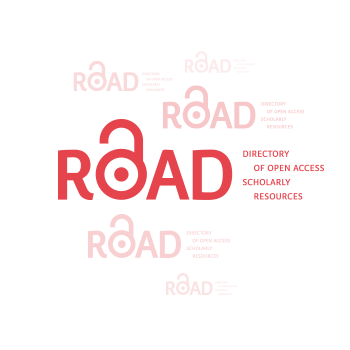La comprensión de múltiples textos multimodales. ¿Un proceso de construcción de representaciones simbólicas o corpóreas?
Resumen
La comprensión de múltiples textos multimodales es una actividad que requiere la representación de variables externas al lector a través de las variables internas del lector. Al respecto, la teoría simbólica y la teoría corpórea han hecho sustanciales contribuciones. Comparativamente, los aportes desde el enfoque de la comprensión multimodal han sido sustancialmente menores al igual que desde la teoría de comprensión de múltiples documentos. Aunado a lo anterior, la noción de texto y la de los formatos de representación mental no han sido ahondadas con la rigurosidad necesaria en los dos últimos marcos teóricos. Así, en este artículo buscamos contribuir a reflexionar acerca de la naturaleza cognitiva con que se representan a las variables propias de los textos. Para ello revisamos y contrastamos siete modelos, prestando atención a las nociones teóricas relacionadas a los textos y sus representaciones mentales.
Descargas
Citas
Acarturk, C. y Ozcelik, E. (2016). Secondary-task effects on learning with multimedia: An investigation through eye-movement analysis. The Journal of Experimental Education, 85(1), 126-141. https://doi.org/10.1080/00220973.2016.1143793
Ainsworth, S. (2018). Multi-modal, multi-source reading: A multi-representational reader’s perspective. Learning and Instruction, 57, 71-75. https://doi.org/10.1016/j.learninstruc.2018.01.014
Baddeley, A. (2000). The episodic buffer: A new component of working memory? Trends in Cognitive Science, 4, 417-423. https://doi.org/10.1016/S1364-6613(00)01538-2
Barsalou, L. (1999a). Perceptual symbol systems. Behavioral and Brain Sciences, 4(22), 577-660. https://doi.org/10.1017/S0140525X99002149
Barsalou, L. (1999b). Language comprehension: Archival memory or preparation for situated action? Discourse Processes, 28(1), 61-80. https://doi.org/10.1080/01638539909545069
Bateman, J. (2008). Multimodality and genre: A foundation for the systematic analysis of multimodal documents. Springer. https://rb.gy/kdt5y6
Braasch, J., y Bråten, I. (2017). The Discrepancy-Induced Source Comprehension (D-ISC) Model: Basic assumptions and preliminary evidence. Educational Psychologist, 52(3), 167-181. https://doi.org/10.1080/00461520.2017.1323219
Britt, A., Perfetti, C., Sandak, R., y Rouet, J.-F. (1999). Content integration and source separation in learning from multiple texts. En S. R. Goldman, A. Graesser y P. van den Broek (Eds.), Narrative comprehension, causality, and coherence: Essays in honor of Tom Trabasso (pp. 209-233). Erlbaum. https://rb.gy/uxszu6
Britt, A., Rouet, J., y Braasch, J. (2012). Documents as entities. En A. Britt, S. R. Goldman y J.-F. Rouet (Eds.), Reading from words to multiple texts (pp. 160-179). Routledge. https://doi.org/10.4324/9780203131268
Buchholz, B., y Pyles, D. (2018). Scientific literacy in the wild: Using multimodal texts in and out of school. The Reading Teacher, 72(1), 61-70. https://doi.org/10.1002/trtr.1678
de Beaugrande, R., y Dressler, W. (1981). Introduction to text linguistics. Longman. https://rb.gy/xal9cx
de Vega, M. (2002). Del significado simbólico al significado corpóreo. Estudios de Psicología, 23(2), 153-174. https://doi.org/10.1174/02109390260050012
de Vega, M., Glenberg, A., y Graesser, A. (2012). Symbols and embodiment: Debates on meaning and cognition. Oxford University Press. https://doi.org/10.1093/acprof:oso/9780199217274.001.0001
Ericsson, K., y Kintsch, W. (1995). Long-term working memory. Psychological Review, 102(2), 211-245. https://doi.org/10.1037/0033-295x.102.2.211
Fillmore, C. (1968). The case for case. En E. Bach y R. T. Harms (Eds.), Universals in linguistic theory (pp. 1-88). Holt, Rinehart & Wilson. https://rb.gy/cent8g
Fodor, J. (1983). The modularity of mind. MIT press. https://rb.gy/tjwlmo
Goldman, S. (1997). Learning from text: Reflections on the past and suggestions for the future. Discourse Process, 23(3), 357-398. https://doi.org/10.1080/01638539709544997
Goldman, S., Golden, R., y van den Broek, P. (2007). Why are computational models of text comprehension useful? En F. Schmalhoefer y C. Perfetti (Eds.), Higher level language processes in the brain: Inference and comprehension processes (pp. 27-51). Erlbaum. https://rb.gy/ciepw8
Graesser, A., Singer, M., y Trabasso, T. (1994). Constructing inferences during narrative text comprehension. Psychological Review, 101(3), 371-395. https://doi.org/10.1075/hcp.8.14gra
Harari, Y. (2014). Sapiens: A brief history of humankind. Londres, Inglaterra: Vintage Books. https://rb.gy/kvvbqw
Jian, Y. (2015). Fourth graders' cognitive processes and learning strategies for reading illustrated biology texts: Eye movement measurements. Reading Research Quarterly, 51(1), 93-103. https://www.jstor.org/stable/43999145
Kintsch, W. (1998). Comprehension: A paradigm for cognition. Cambridge University Press. https://rb.gy/aterru
Kintsch, W. (2013). Revisiting the Construction-Integration Model of Text Comprehension and its implications for instruction. En D. Alvermann, N. Unrau y R. Ruddell (Eds.), Theoretical Models and Processes of Reading. 807-839. https://doi.org/10.4324/9781315110592-12
Kintsch, W., y van Dijk, T. (1978). Toward a model of text comprehension and production. Psychological Review, 85(5), 363-394. https://doi.org/10.1037/0033-295X.85.5.363
Kress, G., y van Leeuwen, T. (1996). Reading images: The grammar of visual design. Routledge. https://rb.gy/1zxlw6
Kress, G., y van Leeuwen, T. (2001). Multimodal Discourse: The Modes and Media of Contemporary Communication. https://rb.gy/eu7tya
Langacker, R. (1990). Concept, image, and symbol: The cognitive basis of grammar. du Gruyter. https://doi.org/10.1515/9783110857733
List, A., y Alexander, P. (2017). Cognitive affective engagement model of multiple source use. Educational Psychologist, 52(3), 182-199. https://doi.org/10.1080/00461520.2017.1329014
List, A., y Alexander, P. (2018). Postscript: In pursuit of integration. Learning and Instruction, 57, 82-85. https://doi.org/10.1016/j.learninstruc.2018.04.002
Mann, W., y Thompson, S. (1988). Rhetorical structure theory: Toward a functional theory of text organization. Text-interdisciplinary Journal for the Study of Discourse, 8(3), 243-281. https://doi.org/10.1515/text.1.1988.8.3.243
Mason, L. Tornatora, M., y Pluchino, P. (2013). Do fourth graders integrate text and picture in processing and learning from an illustraded science text? Evidence from eye-movement patterns. Computers & Education, 60(1), 95-109. https://doi.org/10.1016/j.compedu.2012.07.011
Mayer, R. (2005). Cognitive theory of multimedia learning. En R. Mayer (Ed.), The cambridge handbook of multimedia learning (pp. 31-48). Cambridge University Press. https://doi.org/10.1017/CBO9780511816819.004
Moreno-de-León, T. (2018). El papel de los objetivos de lectura en la comprensión de múltiples textos multimodales de economía: estudio con técnicas Eye Tracking [Tesis de magíster]. Pontifica Universidad católica de Valparaíso. https://bit.ly/3Mb0QXl
Moreno-de-León, T., de León, E., y Bautista, J. (2023). Intertextualidad y multimodalidad en páginas de Facebook durante el estallido social chileno. LATAM Revista Latinoamericana De Ciencias Sociales Y Humanidades, 4(1), 1781–1808. https://doi.org/10.56712/latam.v4i1.377
Parodi, G. (2010). Multisemiosis & lingüística de corpus: Artefactos (multi)semióticos en los textos de seis disciplinas en el Corpus PUCV-2010. Revista de Lingüística Teórica y Aplicada (RLA), 48(2), 33-70. http://dx.doi.org/10.4067/S0718-48832010000200003
Parodi, G. (2011). La Teoría de la Comunicabilidad: Notas para una concepción integral de la comprensión de textos escritos. Revista Signos. Estudios de Lingüística, 44(76), 145-167. http://dx.doi.org/10.4067/S0718-09342011000200004
Parodi, G. (2014). Comprensión de textos escritos. La Teoría de la Comunicabilidad. Eudeba.
Parodi, G., Moreno-de-León, T., y Julio, C. (2020). Comprensión de textos escritos: reconceptualizaciones en torno a las demandas del siglo XXI. Íkala, Revista de Lenguaje y Cultura, 25(3), 775-795. https://doi.org/10.17533/udea.ikala.v25n03a10
Parodi, G., Moreno-de-León, T., Julio, C., y Burdiles, G. (2020). Comprensión de múltiples textos multimodales y objetivos de lectura: Un estudio con profesionales de economía. En Parodi, G., y Julio, C. (Eds.), Comprensión y discurso: Del movimiento ocular al procesamiento cognitivo. Ediciones Universitarias de Valparaíso. http://bit.ly/3Ul2IPE
Parodi, G., y Moreno-de-Léon, T. (2021). Comprender los textos escritos. En Ó. Loureda y A. Schrott (Coords.), Manual de lingüística del hablar (pp. 599-620). De Gruyter. https://doi.org/10.1515/9783110335224-030
Richter, T. (2011). Cognitive flexibility and epistemic validation in learning from multiple texts. En J. Elen, E. Stahl, R. Bromme y G. Clarebout (Eds.), Links between beliefs and cognitive flexibilit (pp. 125-140). http://dx.doi.org/10.1007/978-94-007-1793-0_7
Richter, T., y Maier, J. (2017). Comprehension of multiple documents with conflicting information: A two-step model of validation. Educational Psychologist, 52(3), 148-166. https://doi.org/10.1080/00461520.2017.1322968
Rim, K., y Yoon, Y. (2015). Study of learning performance improvement based on color changes of test sheets. International Journal of Multimedia and Ubiquitous Engineering, 10(9), 9-16. http://dx.doi.org/10.14257/ijmue.2015.10.9.02
Rouet, J. (2006). The skills of document use: From text comprehension to web-based learning. Erlbaum. https://doi.org/10.4324/9780203820094
Rouet, J.-F., Britt, A. y Durik, A. M. (2017). RESOLV: Readers’ representation of reading contexts and tasks. Educational Psychologist, 52(3), 200-215. https://doi.org/10.1080/00461520.2017.1329015
Rouet, J., y Britt, A. (2011). Relevance processes in multiple document comprehension. En M. T. McCrudden, J. P. Magliano y G. Schraw (Eds.), Text relevance and learning from text (pp. 19-52). Information Age Publishing. https://bit.ly/3mVryuB
Rouet, J., y Britt, A. (2014). Multimedia learning from multiple documents. En R. Mayer (Ed.) The cambridge handbook of multimedia learning (pp. 813-841). Cambridge University Press. https://doi.org/10.1017/CBO9780511816819
Sadoski, M., y Paivio, A. (2004). A dual coding theoretical model of reading. En R. B. Ruddell y N. J. Unrau (Eds.), Theoretical models and processes of reading. (pp. 1329-1362). International Reading Assciation. https://bit.ly/3Z0l7Ui
Schnotz, W., y Wagner, I. (2018). Construction and elaboration of mental models through strategic conjoint processing of text and pictures. Journal of Educational Psychology, 110(6), 850-863. https://doi.org/10.1037/edu0000246
Stich, S. (1992). What is a theory of mental representation? Mind, 101(402), 243-261. https://www.jstor.org/stable/2254333
van Dijk, T., y Kintsch, W. (1983). The cognitive model strategies of discourse comprehension. Academic Press. https://rb.gy/a4p7el
Weber, K. (2018). The role of sourcing in mathematics. En J. Braasch, I. Braten y M. McCrudden (Eds.), Handbook of multiple source use (pp. 238-253). https://doi.org/10.4324/9781315627496
Zwaan, R. (1999). Situation models: the mental leap into imagined worlds. Current Directions in Psychological Science, 8(1), 15-18. https://doi.org/10.1111/1467-8721.00004
Zwaan, R. A. (2004). The immersed experiencer: Toward an embodied theory of language comprehension. Psychology of learning and motivation, 44, 35-62. https://doi.org/10.1016/S0079-7421(03)44002-4
Zwaan, R., Langston, M., y Graesser, A. (1995). The construction of situation models in narrative comprehension: An event-indexing model. Psychological Science, 6(5), 292-297. https://doi.org/10.1111/j.1467-9280.1995.tb00513.x
Zwaan, R., Madden, C., Yaxley, R., y Aveyard, M. (2004). Moving words: Dynamic representations in language comprehension. Cognitive Science, 28, 611–619. https://doi.org/10.1016/j.cogsci.2004.03.004
Zwaan, R., Magliano, J., y Graesser, A. (1995). Dimensions of situation-model construction in narrative comprehension. Journal of Experimental Psychology: Learning, Memory, and Cognition, 21(2), 386-397. https://doi.org/10.1111/j.1467-9280.1995.tb00513.x
Zwaan, R., Stanfield, R., y Yaxley, R. (2002). Language comprehenders mentally represent the shape of objects. Psychological Science, 13, 168-171. https://www.jstor.org/stable/40063860
Zwaan, R., y Madden, C. (2005). Embodied sentence comprehension. En D. Pecher y R. Zwaan (Eds.), Grounding cognition: The role of perception and action in memory, language, and thought (pp. 224-245). Cambridge University Press. https://bit.ly/3yN9yoN
Zwaan, R., y Radvansky, G. (1998). Situation models in language comprehension and memory. Psychological Bulletin, 123(2), 162-185. https://pubmed.ncbi.nlm.nih.gov/9522683/
Derechos de autor 2023 Tomás Moreno-de-León ;Esperanza de León Arellano;Norma Alicia Vega López

Esta obra está bajo licencia internacional Creative Commons Reconocimiento 4.0.













.png)




















.png)
1.png)


